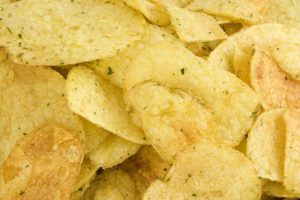How safe is the food you eat? That’s a question you should ask yourself one of this fine days. Why? The incidence of foodborne diseases is increasing dramatically, and it’s only through food safe practices that we can reduce their incidence.
Just recently we looked at food safety with regard to the potential health risks that roadside foods pose, but today we’re going to a place close to us — that place is called home.
Home is probably the most important place when it comes to food safety, as it’s where the majority of us come into contact with food. Poor personal and environmental hygiene are usually the most common sources of increased risk of infection to foodborne diseases.
According to WHO, about 30-40% of all food borne diseases are actually experienced at our homes and this happens mostly due to poor preparation of food.
Food Contamination at the Home
Poor food handling and storage, however, are the main causes of contamination at home. Consuming such food can lead to food poisoning which manifests itself in various symptoms including but not limited to vomiting, diarrhoea, abdominal cramping and fever.
Usually, some people tend to be more affected than others when it comes to food poisoning. This happens due to factors like age, immunity, sex and environment.
Groups of people that are at risk of being affected more by foodborne diseases include pregnant women, the elderly, the disabled, young children and those with low immunity.
From a study that was done on food safety at home, results showed that foodborne diseases are on the rise due to lack of knowledge on food safety. Consumers therefore have to be informed about safety practices that are key for maintaining good health.
For instance, while it’s obvious that people should always wash their hands before food preparation, the study surprisingly found out that people who adhere to this simple practice is quite low.
In addition to this, a great deal of people don’t read food labels on the food products they buy from kiosks or supermarkets to ascertain whether they’ve expired or not.
Food Safety Tips at Home
Educating consumers on food safety practices is the most important measure in achieving food safety at our homes. This can be done by improving their basic knowledge on food safety practices, especially in areas of food handling and storage.
1. Who is cooking your food?
It’s often the case at home that a certain person is tasked with the role of buying, handling and preparing the food. It could be anybody, from the house help to one of the parents or even the children.
Consequently, if such a person lacks the requisite knowledge on how to safely handle food, then the whole household is put at a risk of food poisoning. It’s therefore very important we educate the persons who handle our food at home on safe practices rather than assume they know what you may regard as obvious.
2. How well are you storing your food?
When it comes to storing food in refrigerator, foods should be stored in the right compartments, at proper distances from each other and within proper temperature ranges to ensure bacteria don’t survive.
Food should also be covered properly, not to mention the fridge should be cleaned regularly to ensure it’s hygienic and remains in good working condition.
Foods once defrosted should be reheated only once, as subsequent cooling and reheating increases one’s chances of food poisoning. More info on how to safely store your food can be found here.
3. How safe are you preparing your food?
In terms of food preparation, one of the most used kitchen appliance is the cutting board. But as it turns out, the cutting board is responsible for contaminating most food at home according to one of the studies.

Most people usually don’t see the harm in not cleaning or disinfecting the cutting board between different foods being used as part of a larger meal. This is quite risky, as it can easily transfer contaminants from one food to another, thereby increasing one’s risk of infection.
It should also go without saying that a board that has been used to cut raw food should not be used to cut cooked food during serving. Furthermore, wooden cutting boards, which are most the most popular, are porous and therefore much harder to clean compared to marble, glass or plastic boards.
As such, they need to be cleaned properly before use, and should be replaced if they get too worn out (e.g. form deep grooves that are hard to clean).
Cleaning your hands after handling raw foods (e.g. meats) can also go a long way in preventing the spread of contaminants from one food to the other.
5. How well are you cooking your food?
Foods should be cooked properly to avoid undercooking which exposes us to the most pathogens (e.g. bacteria). For instance, meat should be cooked for more than 40 minutes for it to be safe for consumption. This ensures most pathogens that could be in the meat are killed.
On the other hand, it’s not advisable to overcook certain foods like vegetables as this will destroy most of their key nutrients (such as vitamins) which are volatile to heat. For such foods, rather than overcook them to destroy germs and other contaminants, it’s advisable to clean them properly before cooking.
If you buy your vegetables “pre-chopped” from a mama mboga, please ensure that they use clean water every time to clean them, as it’s often the case that the cleaning water gets overused to the point it’s dirty.
It’s also advisable to have them chopped just before you buy them since exposure to air and the sun over long periods whilst chopped causes them to lose vitamins.
6. Where do your vegetables come from?
As an added measure, it won’t hurt to go the extra mile and establish where your vegetables are being sourced from.
This is because proper cleaning and cooking will do very little for contaminants like heavy metals (e.g. lead) and pesticides which are exposed to the plants while still in the farm.
While the health consequences of such contaminants are not readily visible as is the case with food poisoning, they actually pose far much riskier ailments in the long term.





